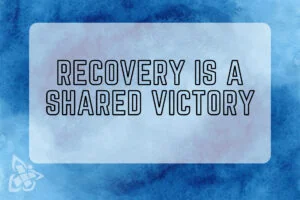Vibrant Displays Lure Youth, Blurring Lines Between Candy And Vice
What specific tactics do vape shops use, similar to candy stores, to create an appealing atmosphere for attracting young customers? Get help from qualified counsellors.
- Effective Addiction & Mental Health Rehab
- Outpatient, Detox, Primary, Secondary, Sober Home
- 100+ Private South African Locations
It’s not the smell of smoke anymore that gives it away, it’s the cloud of “blue raspberry” mist hanging around a school gate. It’s the faint click of a disposable vape being tucked into a sleeve before class. Somewhere between the candy aisle and the convenience store counter, vaping stopped being a smoking alternative and became a youth epidemic wrapped in neon packaging.
Teens and young adults aren’t just experimenting, they’re being sold a lie: that vaping is harmless, modern, and even healthy. But the truth? It’s nicotine addiction in disguise, and it’s spreading faster than any cigarette ever did.
How Vaping Became the New Candy Store
Walk into most vape shops today and you won’t find grim warnings or sterile walls. You’ll find colours that pop, glowing counters, and rows of vapes that look more like sweets than cigarettes. Flavours range from cotton candy and mango ice to tiramisu, all designed to feel more playful than poisonous.
This isn’t by accident. It’s strategy. Vape marketing has perfected what tobacco companies once mastered, making addiction look appealing. The Royal College of Paediatrics and Child Health reported a 50% rise in e-cigarette experimentation among 11 to 17-year-olds in just one year. That’s not curiosity; that’s clever marketing in action.
Search trends mirror the obsession. Interest in brands like Prime Bar and Crystal Bar has skyrocketed by over 400%, while “vape shop near me” searches have climbed 135% since 2020. The appeal isn’t about quitting smoking, it’s about identity. It’s lifestyle branding that speaks to youth culture, pulling teens into a market they were never meant to be part of.
The Illusion of “Safer Than Smoking”
When vaping first hit the shelves, it came with a halo. “A healthier alternative,” they said. “A way to quit smoking,” they promised. For adult smokers desperate to kick a deadly habit, it seemed like a miracle. But for teens, it became a gateway, not out of addiction, but into it.
E-cigarettes deliver nicotine differently than cigarettes, smoother, more frequent, and easier to hide. You don’t need to light up or step outside. You can vape anywhere, anytime. And because each puff feels mild, people end up consuming more nicotine overall. In fact, many first-time vapers are now discovering that they’re more hooked than traditional smokers ever were.
Searches like “Why do I vape more than I smoked?” reflect a grim reality: what started as control quickly spirals into compulsion. The nicotine delivery is cleaner, faster, and more deceptive, making it easier to underestimate the damage until it’s too late.
Help For You
Facing your own drinking or drug use can feel overwhelming, but ignoring it usually makes things worse. Here you’ll find clear information on addiction, self-assessment, and what realistic treatment and recovery options look like.
Help A Loved One
If someone you care about is being pulled under by alcohol or drugs, it can be hard to know when to step in or what to say. This section explains warning signs, practical boundaries, and how to support them without enabling.
Frequent Questions
Most families ask the same tough questions about relapse, medical aids, work, and what recovery really involves. Our FAQ gives short, honest answers so you can make decisions with fewer unknowns.
The Psychology of Teen Addiction
Adolescence is a storm of self-discovery, emotion, and risk-taking. The brain is still developing, particularly the prefrontal cortex, which controls impulse and judgment. Vaping hijacks this process.
Every puff floods the brain with dopamine, the same “feel-good” chemical that drives gambling, gaming, and social media use. For teens, that hit feels powerful. It relieves stress, eases social anxiety, and feels like control in an unpredictable world. But the price is steep.
The more the brain gets used to artificial dopamine bursts, the harder it becomes to feel satisfaction naturally. Teens aren’t weak, they’re neurologically wired for connection and reward. The vaping industry knows that. And they’ve built a multi-billion-rand empire around exploiting it.
The Silent Health Fallout
Nicotine addiction has always been underestimated. It doesn’t come with an overdose headline or a dramatic collapse. It’s slower, sneakier, a rewiring of how the brain handles pleasure and calm.
But the damage is very real. Nicotine raises blood pressure and adrenaline, putting strain on the heart. The chemicals in vape liquids, even those labelled “nicotine-free”, can irritate the lungs, cause chronic coughing, and impair oxygen flow.
What’s worse is how little we still know. E-cigarettes are too new for long-term data, but early research shows worrying signs: inflammation in lung tissue, blood vessel damage, and immune system suppression. The truth is, the world is watching a public health experiment unfold, and it’s teenagers who are the test subjects.
From Vape to Vice
The idea that vaping “keeps teens away from cigarettes” is crumbling fast. Research suggests that nicotine exposure through vaping actually increases the likelihood of later substance abuse. Once the brain learns to crave stimulation and relief from one chemical, it’s far easier to turn to another when stress hits.
For many young users, vaping isn’t the end, it’s the beginning. What starts as a flavour-driven trend becomes the foundation of future dependency. And because vaping carries less stigma than smoking, it’s harder for parents and teachers to spot the warning signs. The cultural camouflage makes intervention even more difficult.
Why Quitting Feels Impossible
Nicotine addiction is one of the hardest to break, and vaping makes it even harder. Cigarettes have built-in limits, smell, cost, and social restriction. Vapes remove all of those barriers. They’re discreet, cheap, and constant.
Add to that the emotional patterns that vaping taps into, boredom, anxiety, loneliness, and you get a cycle that feels impossible to escape. For teens, it’s not just about craving nicotine. It’s about what vaping represents, belonging, rebellion, relief.
Quitting means more than putting down the device. It means facing what made you pick it up in the first place. That’s why professional help matters, because breaking a chemical habit without breaking the emotional one almost always leads to relapse.
Fighting Back, What Actually Works
Scare tactics don’t work, they never have. Showing black lungs and hospital beds might shock people momentarily, but it rarely changes behaviour. What works is honesty and empathy.
Education that tells the truth, not just “vaping is bad,” but why it hooks you, how it manipulates your brain, and what it takes from your future, is the kind of messaging that resonates. School programmes that teach self-awareness, peer pressure resistance, and emotional regulation make more impact than fear campaigns ever could.
For those already struggling, treatment for nicotine addiction is available. Counselling, support groups, and cognitive-behavioural therapy can help people understand the triggers that keep them vaping. Some find help through nicotine replacement therapy, others through complete detox supported by professionals.
Quitting is possible, but it requires community, not shame.
The Industry’s Accountability Problem
Vape companies insist they’re helping smokers quit, but their marketing tells another story. Ads featuring pastel colours, influencer collaborations, and fruit-flavoured product launches aren’t targeting long-term smokers, they’re targeting youth.
It’s the same tobacco playbook, rewritten for the social media age. Regulation hasn’t kept up, leaving companies free to exploit loopholes and market under the radar. “We banned cigarettes,” one addiction specialist noted, “but we gave them Wi-Fi and candy flavours.”
Governments are starting to take notice, with calls to restrict flavours, limit advertising, and enforce stricter age verification. But for every rule, the industry finds a workaround, and by the time the law catches up, the next generation is already hooked.
The Generation That Can Still Say No
It’s easy to feel cynical, like the damage is already done. But that’s not true. Awareness is growing, and teens themselves are starting to speak out. There’s a shift happening: the same youth culture that made vaping “cool” is now calling it out for what it is, corporate manipulation disguised as lifestyle freedom.
Parents, teachers, and health professionals can help by creating spaces where young people feel safe talking about vaping without being judged. Curiosity doesn’t need to turn into dependency if it’s met with understanding, not anger.
The goal isn’t to shame teens, it’s to empower them. To show that they have the right to question what they’re sold, to reject what’s designed to enslave, and to build a future that doesn’t depend on nicotine clouds to feel calm.
Vaping didn’t start as a youth movement, but it became one because adults failed to protect young people from marketing disguised as modern health. The industry found its next customer base in our kids.
But it’s not too late. Awareness, education, and compassion can change the trajectory. The hands holding vapes today are the same ones that can build a smoke-free generation tomorrow.
The clouds may look harmless, but behind every puff is a choice. The power to stop lies not with the companies that profit, but with the people who finally see through the smoke.

Rehab Has A Stigma Because People Keep Imagining The Wrong Thing Rehab carries a reputation…

Addiction is often seen as a family disease because it affects not only the health…

We all want what is best for ourselves and our loved ones and when it…